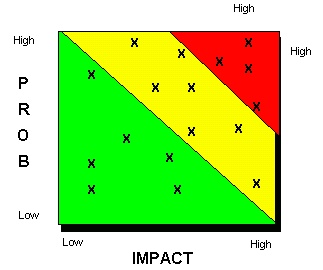It's that time of year. Many of us are engaged in testing just how much the Christmas mood can be stretched. It's kind of a stress test - this year no exception. We do not do predictions here on this blog. At least not the bold ones. For that we have the experts who every year publish the World Quality Report. If you have a spare moment before Christmas take a look at it. At least it's a good source of inspiration for the strategic initiatives
But back to this blog. What's happening here? Well for 2016 we would like to see the following.
Make your black box testing a bit more white
This is a tough one. One on side black box testing has a specific purpose - interact with a system with known inputs in order to get predicted test results to prove that requirements are implemented. On the other hand - wouldn't it be nice if there actually was a deeper understanding among the testers about what actually goes on behind the scenes? Maybe that's also what is covered in the World Quality Report when they put emphasis on "Expand testing teams’ skills beyond manual and test automation".
Spend more resources on test data
Test data will continue to become more and more critical for testing. For system integration testing it is maybe the most important component to be in control of. And yet, this is where most testing organisations fail to address the problems they are facing. This is not about strategy or big frameworks. This is hands on work that require the participation of the development organisation on a broad scale - not the same as many resources or a lot of effort but do a bit of agile approach to this and focus on the areas with high frequency and where it really hurts. It's like a toothache - it does not go away on itself and every time you test the problem is there - and it takes more resources to work with a bad solution so no need for fancy ROI analysis. Just do it.
Devops and testing are two of a kind
If your organisation is beyond "agile" and are now focusing on the new management buzz "Devops" make sure that testing is involved in whatever activities that happen around this area. We all know that testers are the most valuable source of knowledge prior to go-live and the "Ops" should therefore be interested in that knowledge. And vice-versa - testers always love real "Ops" stories because they give such good input to fill the missing blanks. The areas we forgot to think about when we did our test planning and analysis. But the end users found them - those who pay our salary.
Season greetings
So please, Santa. This was three of the wishes on the list. There are about 999 other interesting test related topics that we would also like to address but they are currently in the drawer waiting for 2016 and more action on this blog.
Season greetings to all of you and thanks for following this blog.

But back to this blog. What's happening here? Well for 2016 we would like to see the following.
Make your black box testing a bit more white
This is a tough one. One on side black box testing has a specific purpose - interact with a system with known inputs in order to get predicted test results to prove that requirements are implemented. On the other hand - wouldn't it be nice if there actually was a deeper understanding among the testers about what actually goes on behind the scenes? Maybe that's also what is covered in the World Quality Report when they put emphasis on "Expand testing teams’ skills beyond manual and test automation".
Spend more resources on test data
Test data will continue to become more and more critical for testing. For system integration testing it is maybe the most important component to be in control of. And yet, this is where most testing organisations fail to address the problems they are facing. This is not about strategy or big frameworks. This is hands on work that require the participation of the development organisation on a broad scale - not the same as many resources or a lot of effort but do a bit of agile approach to this and focus on the areas with high frequency and where it really hurts. It's like a toothache - it does not go away on itself and every time you test the problem is there - and it takes more resources to work with a bad solution so no need for fancy ROI analysis. Just do it.
Devops and testing are two of a kind
If your organisation is beyond "agile" and are now focusing on the new management buzz "Devops" make sure that testing is involved in whatever activities that happen around this area. We all know that testers are the most valuable source of knowledge prior to go-live and the "Ops" should therefore be interested in that knowledge. And vice-versa - testers always love real "Ops" stories because they give such good input to fill the missing blanks. The areas we forgot to think about when we did our test planning and analysis. But the end users found them - those who pay our salary.
Season greetings
So please, Santa. This was three of the wishes on the list. There are about 999 other interesting test related topics that we would also like to address but they are currently in the drawer waiting for 2016 and more action on this blog.
Season greetings to all of you and thanks for following this blog.







